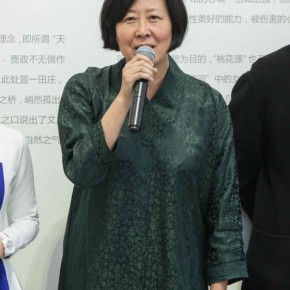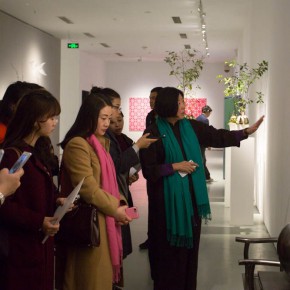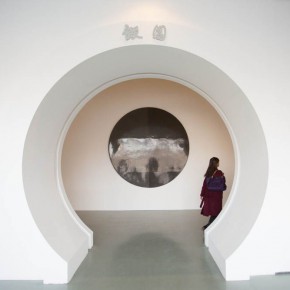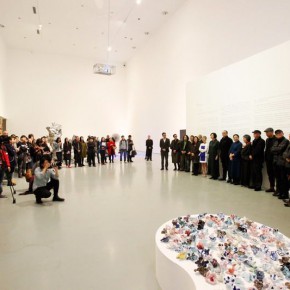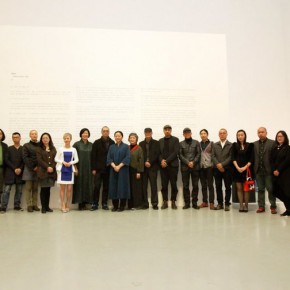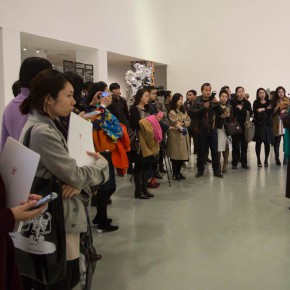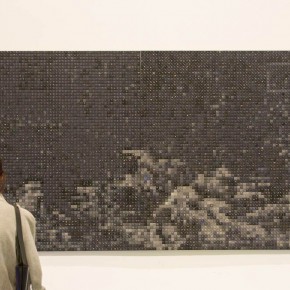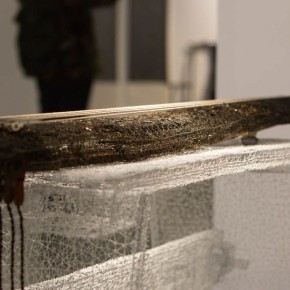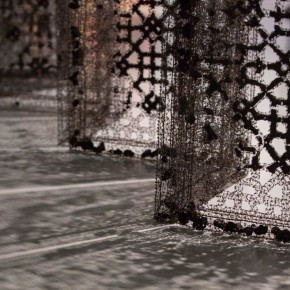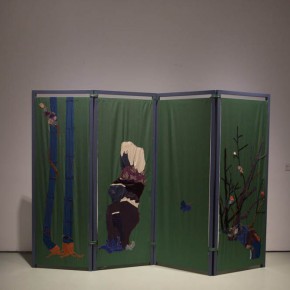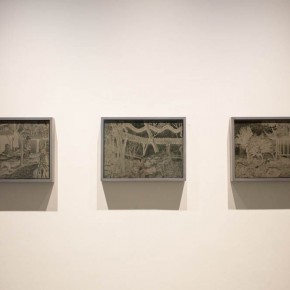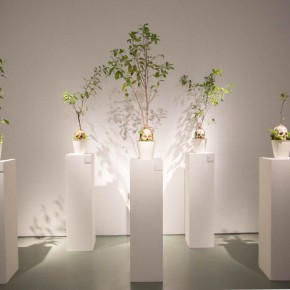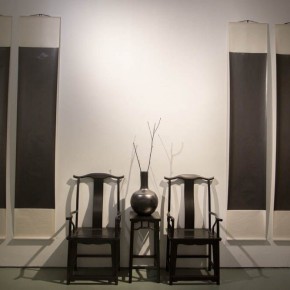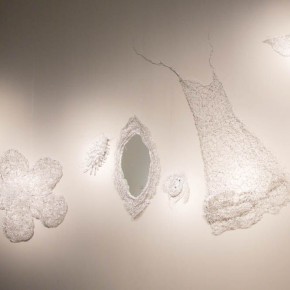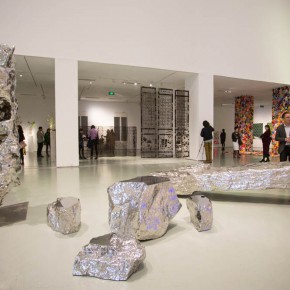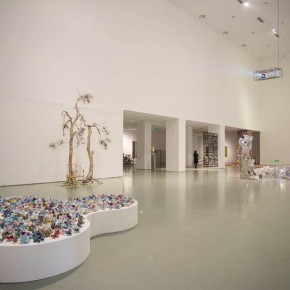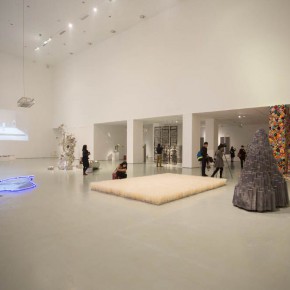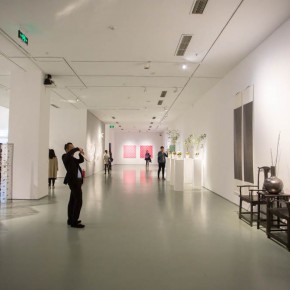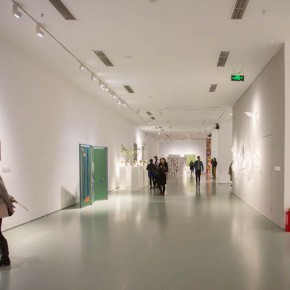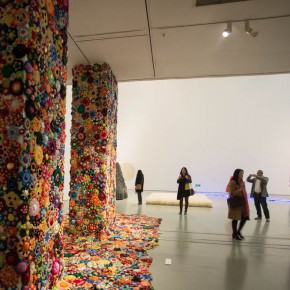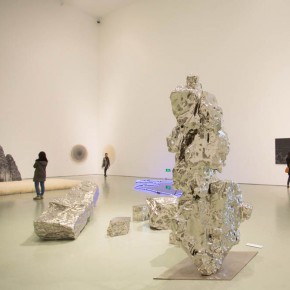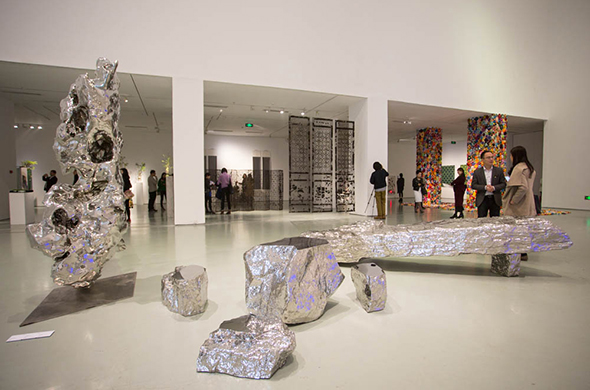
On the afternoon of March 19, 2016, the academic exhibition “Artificial Garden”, hosted by Today Art Museum and co-sponsored by Artaste and Ju De Wen Hua, opened on the 2nd floor, Building 1, Today Art Museum. The exhibition was planned by Liao Wen, a well-known Chinese curator, who presents a total of 49 pieces of artworks produced by 21 artists, namely, Zhang Zhenyu, Zhan Wang, Yu Jia, Yang Qian, Zhang Wei, Wang Changming, Shi Jinsong, Yang Fan, Chen Chunmu, Yang Guang, Su Yabi, Xie Fan, Liao Jianhua, He Chengyao, Hong Lei, Shi Jindian, Jin Weihong, Meng Boshen, Shen Yue, Ouyang Wendong and Li Bo.
“Artificial Garden” is “Artificial”
On entering the exhibition site, the visitor will first see the door of the arched feature wall which is commonly seen in the classic garden. It was designed by the curator Liao Wen – from the exhibition thematic planning concept “artificial garden” to the presentation of “artificial landscape”, and even the layout and setting of the whole exhibition hall, and the visiting style for the audience, etc., all employ an artistic style of expression – “borrowing”, skillfully using the design technique of the landscape garden, so that the visitor can get a mixed feeling of being both familiar and unfamiliar.
In the exhibition, all things are “artificial”, and the exhibited items are all related to the garden but existing by being stripped from the landscape: the “grassland” formed by nylon cable ties planted on the cement, Taihu Lake stone made of stainless steel, lake water of the North See designed through mobile apps, “mountains” made of lead-covered bullion, the “shadow wall” with ashes made into a mirror, Taihu Lake stone cut and polished in a modern way of “straight and square” that is different from the traditional aesthetic standard of “thin, leak, transparent”, the scene of “literati painting” composed of golden pine trees, chairs and Taihu Lake stone made of copper, the flower bed sewn by hand using textile materials, the “garden of desire” composed of wood paintings and copper trees, the “mini-scape” made of wasted materials such as stainless steel, insects and flowers woven by metal threads, “latticed windows” painted in a variety of non-traditional ways, flower-pattern latticed windows, round windows, the silk painting showing garden details, the hollowed out door, stripped screen and zither woven by metal threads, the non-realistic painting screen , the “vast land” produced by pencil sketching and computer processing, the colorful ceramic garden… The exhibitors include the unknown youths, the well-known mature artists, architects and other professionals. Regardless of age and status, the curator especially chose the work fusing the theme and personal characteristics, to bring the audience an “artificial garden” of contemporary art.
“Artificial Garden” is “real”
When the audience still explores what is an “artificial garden”, the curator Liao Wen thought that one only needed to find the answer from the novel and common works. “It is very simple, not complicated,” Liao Wen simply evaluated the exhibition, “Contemporary art is not complicated, my show is clear, I believe anyone will understand it after seeing it.”
The classical garden is both real and sham, of the true mingled with the false, but one thing is sure and unified, that is the affinity with “nature”. Carefully looking at the exhibition hall, we are familiar with these artificial landscapes, which can be found everywhere in our life, such as ancient trees transplanted everywhere, sandy beaches along the lake, reeds and mangroves planted on the land, fake antique commercial streets built at the cost of destroying the historic sites, fields of flowers and even cartoon images made out of exotic plants, cement bucket arches, covered bridges and doors and windows made of aluminium alloy built in largely expanded gardens, etc. Liao Wen thought that, “these “modern Artificial Gardens” ignored the natural order and cut down the relationship between man and nature. “Living in a world full of ‘gardens’ with no real gardens, we get nothing but ‘artificial experience’ from materials and landscape to aesthetics and feelings. We have lost the ‘love’ for nature and thus lost the ‘eyes of the soul’, our hearts can never get true peace.”
“Everyone” living in today’s world must have had this “artificial experience", however, only because we have “got used to” it, we have ignored the profound meaning behind it. Fortunately, contemporary artists manage to express their feelings through their sensitive attitude and raise questions in an artistic way, which serves the meaning of this exhibit. Therefore, the “Artificial Garden” is definitely not “fake” in the moral sense, but rather a platform for discussion on culture and aesthetics.
As curator Liao Wen writes in the preface – For they are “made by humans”, these gardens are artificial, but they are also “real gardens” as they meet people’s “spiritual needs”. Being both “real” and “artificial”, these “gardens” directly reflect the relationship between man and nature. As people’s lifestyles change, the concept of gardens will also change.
The exhibition remains on view till April 5.
Text by Lin Jiabin, Photo by Hu Sichen and Today Art Museum/CAFA ART INFO
Translated by Chen Peihua and edited by Sue/CAFA ART INFO


